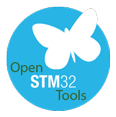OpenSTM32 Community
The STM32 Systems Resource
Zephyr project on STM32
 |
Zephyr Workbench, a VSCode extension to manage Zephyr on STM32.
It enables users to easily create, develop, and debug Zephyr applications. Main features:
For more details, visit the Zephyr Workbench |
System Workbench for STM32
[ prev topic | next topic ]
Search:
Newest Forum Posts
- SPI on Nucleo_STMH533RE, 2025-05-04 20:13
- SPI on Nucleo_STMH533RE, 2025-03-25 07:37
- SPI on Nucleo_STMH533RE, 2025-03-23 11:31
- SPI on Nucleo_STMH533RE, 2025-03-23 09:33
- Configuring DMA for ADC in SW?, 2025-03-04 12:58
- Build a project in "release" mode, 2025-02-20 18:12
- Build a project in "release" mode, 2025-02-20 17:05
- Build a project in "release" mode, 2025-02-20 10:36
- Build a project in "release" mode, 2025-02-19 17:35
- Fail to debug in Win 11 C/C++, 2024-12-26 20:27

